Those who read AppleToolBox regularly will know that we love talking about gaming on Apple devices. Whether that means gaming on a Mac or testing the top ten games on Apple Arcade, we’re always looking to push the boundaries of what’s possible on Apple devices. And today, we’re going to continue that trend by looking at the best iPhone and iPad gaming controllers.
While not necessary for gaming on mobile Apple devices, having a controller for your iPhone or iPad can make a big difference in your enjoyment level. It can allow you to get more immersed, provide more familiar controls, and it can get your fingers off of the screen, giving you more to look at.
In this post, we’re going to be looking at the best controllers that are compatible with your iPhone and/or iPad. Some of these will be controllers you probably have at home, while others will be distinct, MFi options.
So without further ado, let’s jump in!
Contents
- iPhone and iPad gaming controllers: What is an MFi controller?
- What to look for when choosing iPhone and iPad gaming controllers?
- Comfort and accessibility
- Compatibility with your favorite games
- Attaching to your device (or not)
- The best iPhone and iPad gaming controllers
- Which iPhone and iPad gaming controllers are you going to use?
iPhone and iPad gaming controllers: What is an MFi controller?
First things first, let’s explain what “MFi controllers” are. For those that don’t know, “MFi” is short for “Made for iPhone/iPad”. It means that a device was specifically designed with Apple’s mobile devices in mind. And it means that Apple has approved the device to work with Apple devices.
This is different from a third-party controller that claims to work with Apple’s devices. You may find options like this on Amazon, which make big claims that fall apart when they arrive on your doorstep. The MFi attachment means you can rest assured that the device you order is going to work with your iDevices.
That said, there are iPhone and iPad gaming controllers that aren’t necessarily MFi. We’ll cover this more in a bit, but you could use, for instance, a PlayStation 4 controller with your iDevices. It’s not MFi, but it does officially work with most Apple mobile devices.
What to look for when choosing iPhone and iPad gaming controllers?
If you’re just here for a fast recommendation, then by all means, scroll down a bit and jump into the specific controllers we recommend.
For everyone else, here’s a quick breakdown on the key features of iPhone and iPad gaming controllers that you’ll want to consider before making a purchase. By keeping these in mind, you’ll be sure that you get the right controller for your money.
Comfort and accessibility
First, there’s comfort and accessibility. Sometimes, you may find yourself balancing the two. But fortunately, in 2022, most controller manufacturers have nearly perfected the process.
That means you shouldn’t be too hard pressed to find iPhone and iPad gaming controllers that are comfortable to use for hours on end, a few days each week. And most have some accessibility considerations that are implemented, opening up options for more gamers.
Even still, some will have more serious accessibility needs. But don’t worry! We’ve included options in this list that will help you address this. I do recommend doing some additional research outside of this list if accessibility is a chief concern of yours. But we have worked to ensure that you have some choices on this list.
Compatibility with your favorite games
Another thing to consider when looking at iPhone and iPad gaming controllers is whether or not a controller is compatible with a game you want to play.
For the most part, any controller that works with your iDevice will work with all controller-compatible games you want to play. However, not all games offer controller compatibility.
As such, it’s worth checking if the game you want to play offers controller compatibility. Because if it doesn’t, then you may want to hold off on grabbing a controller.
Unfortunately, there isn’t a standardized way to check if a particular game supports a controller. Ideally, Apple would provide this information in the App Store page for each gaming app. But right now, this isn’t a thing.
Instead, you can check this website to see if a game you’re interested in or enjoy playing offers controller support. You can also read through the app’s description on the App Store to see if the answer is provided there. Or you could check the in-game settings for that app and see if a controller is ever mentioned.
If you can’t find any information through any of these avenues, then you’re just going to have to test the game with a controller to find out if it supports a controller.
Attaching to your device (or not)
The last consideration to keep in mind when looking at iPhone and iPad gaming controllers is whether or not you want a solution that attached to your device. This is more so a consideration for iPhone gaming, though I believe there are options that can hold onto your iPad while you game.
For those that aren’t familiar with this idea, there are gaming controllers that attach to your iDevices. They clip onto the sides, resembling a Nintendo Switch. Or the controller will look like a standard Xbox or PlayStation controller, only with a phone mount attached to its front.
You may find that this is more immersive for you, while others will prefer the freedom of setting their iPhone down somewhere and leaning back with their controller. It’s up to you and the kinds of games you want to play.
Also, while this is less common, some games require that you tilt and lean your iPhone to make certain actions happen. If you have a game like this, then that might impact whether or not you want a controller that attaches to your iPhone/iPad.
The best iPhone and iPad gaming controllers
Alright, now that we’ve covered everything you need to know before purchasing iPhone and iPad gaming controllers, let’s get into the specific controllers we recommend. We’ll start with the basics that you probably already have at home, then move on to the more specific, MFi options.
PlayStation 4 and 5 controllers
The first and easiest iPhone and iPad gaming controllers we recommend using are PlayStation 4 and 5 controllers. There is built in support in the current iOS and iPadOS updates that makes connecting these controllers super easy. You can do it right from your iPhone’s Bluetooth settings, similar to how you would any other Bluetooth device.

If you need specific directions on how to connect a PlayStation controller to your iPad or iPhone, you can follow these directions. They should cover everything you need to know!
While using PlayStation controllers isn’t for everyone, it does have a few benefits. First, you may already have some laying around the house. Two, you can grab them from your local gaming store, so you don’t have to wait for them to be delivered.
And third, they’re familiar. If you’ve played a PlayStation before, then using these controllers will probably be more comfortable than some of the other MFi options in this list.
Xbox One controllers
Another similar option for iPhone and iPad gaming controllers are Xbox One controllers. From what I can tell, Xbox One controllers are the same ones being used with the latest gen Xbox console. So you can use your Xbox controllers as long as they’re from the last two generations of Xbox consoles.
Well, almost. There is a bit of a caveat here. Some Xbox One controllers were made without Bluetooth. It took a little while for Xbox to update its controllers with Bluetooth. That means that some Xbox One controllers support iPhone, and some don’t.
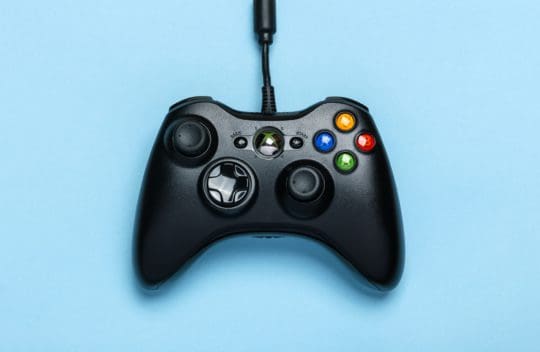
Again, you can refer to this post to see if the Xbox controller you already have supports Bluetooth on your device.
The same benefits apply here as well. There’s a good chance that you already have an Xbox controller around the house, it’ll be familiar and comfortable, and they’re easy to purchase if you don’t already have one.
SteelSeries Nimbus+
With that, it’s time to get into some of the MFi iPhone and iPad gaming controllers. Let’s start with the SteelSeries Nimbus+, which is one of the most popular controllers for mobile devices.
One of the biggest benefits of the Nimbus controller is its battery life. It can go for around 40 hours before needing a recharge, which blows most other options out of the water.

This is also a very compatible controller. It can even work with your Apple TV, so you can play games on the big screen.
The Nimbus also looks a lot like an Xbox controller, even keeping the same button layout. So if you’re someone who is used to Xbox controllers and wants an ergonomic feel, this is a great option.
The big drawback of the Nimbus controller is that it is very pricey. It’ll cost around $150 depending on where you buy it. So with that in mind, I definitely recommend looking for something used.
Razer Kishi Mobile Game Controller
Another pricey but interesting option in our list of iPhone and iPad gaming controllers is the Razer Kishi mobile gaming controller. You may recognize the brand “Razer” for its plethora of gaming hardware, from PCs to keyboards to headphones.
The Kishi is yet another great addition to its lineup of gaming devices. And unlike anything else we’ve mentioned on this list so far, the Kishi attaches to your iPhone in a really interesting way.

Similar to Nintendo Switch Joy Cons, the Kishi is in two halves. One half clips to the left side of your iPhone and the other half clips to the right. This allows you to play the game with a controller while also holding your iPhone. No need to prop it up awkwardly.
It’s designed to work with a broad variety of games, with PC and console level games in mind. You can even play some of these games with gaming streaming apps on your iPhone.
This controller is a $100, so it’s by no means cheap. But the quality and support is there, making this is a great, innovative option.
Xbox Adaptive Controller
Perhaps the most unique controller on our list of iPhone and iPad gaming controllers is the Xbox Adaptive Controller. This is an accessibility controller that works out of the box in a unique, adaptive way.
However, what makes this controller particularly special is that you can modify it in nearly countless ways with other accessories. You can map nearly every button to another device, so if the built-in accessibility settings don’t work for you, you can combine it with other accessories that do.

And best of all, Apple has approved compatibility with this device. So if you’re looking for a unique way to game or rely on compatibility devices in order to game, the Xbox Adaptive Controller has you covered. Connecting it to your device is just as simple as connecting a standard Xbox controller.
Another great thing about the Xbox Adaptive Controller is that it’s not too expensive! It’s only $100, which is a pretty lean price for such an innovative and flexible device. Give it a look!
Rotor Riot Gamepad Controller
One of the most affordable iPhone and iPad gaming controllers on this list is the Rotor Riot gamepad controller. This controller looks like a typical Xbox controller for the most part.
However, there’s an addition on the front of the controller that allows you to mount your iPhone to this device. So you can watch your iPhone screen as you game, which is super handy.

Now, as a budget device, it is lacking in a few key areas. For one thing, it’s not going to be a great option for gaming on iPad. And the buttons aren’t super pleasing to press.
But besides that, this is a pretty solid option. It also claims to be the only MFi controller that supports L3 and R3 button presses (that’s pushing in the left and right sticks), which is neat if true. And it can charge your iPhone while you play.
Overall, this is a great, affordable option for under $50.
Nintendo Switch Joy Cons
The last suggestion on this list of iPhone and iPad gaming controllers that you might already have at home are Nintendo Switch Joy Cons, or the controllers that come with a Nintendo Switch.
These should work with your iPhone after you update to iOS 16, which is the most recent version of iOS at the time of writing. So make sure you’re updated before you try to connect these controllers to your device.

Once connected, these should work like any other controller! I wouldn’t use these unless it was all I had around the house, though. That’s because I don’t think they’re the most ergonomic out of most of the options we’ve given on this list. And if you don’t have them, they can actually be pretty pricey.
Coobile Gaming Controller
The last iPhone and iPad gaming controller we’re going to talk about is the Coobile gaming controller. This is the most affordable option on our list, at just around $10 on Amazon.
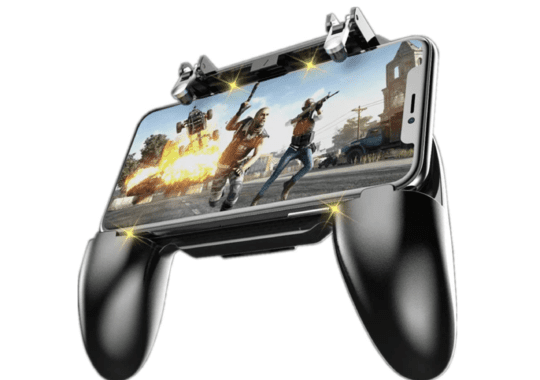
It’s a pretty decent option as well. It can mount your iPhone, similar to the Rotor Riot controller. However, the way it mounts to the Coobile gaming controller means that you’ll be craning your head down a bit.
Besides that, this is a reasonably priced controller for someone who isn’t looking to take their mobile gaming to that extra level. You’re just tired of touch controls and looking for something more familiar.
Which iPhone and iPad gaming controllers are you going to use?
And that’s it! Those are our recommendations for the best iPhone and iPad gaming controllers available right now. My personal recommendation is to go with an Xbox or PlayStation controller, but you can always grab something that’s more suited to your style.
For more insights, news, and guides on all things Apple, check out the rest of the AppleToolBox blog.
See you next time!


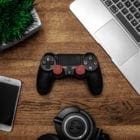

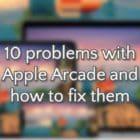



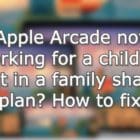
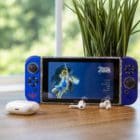
Write a Comment